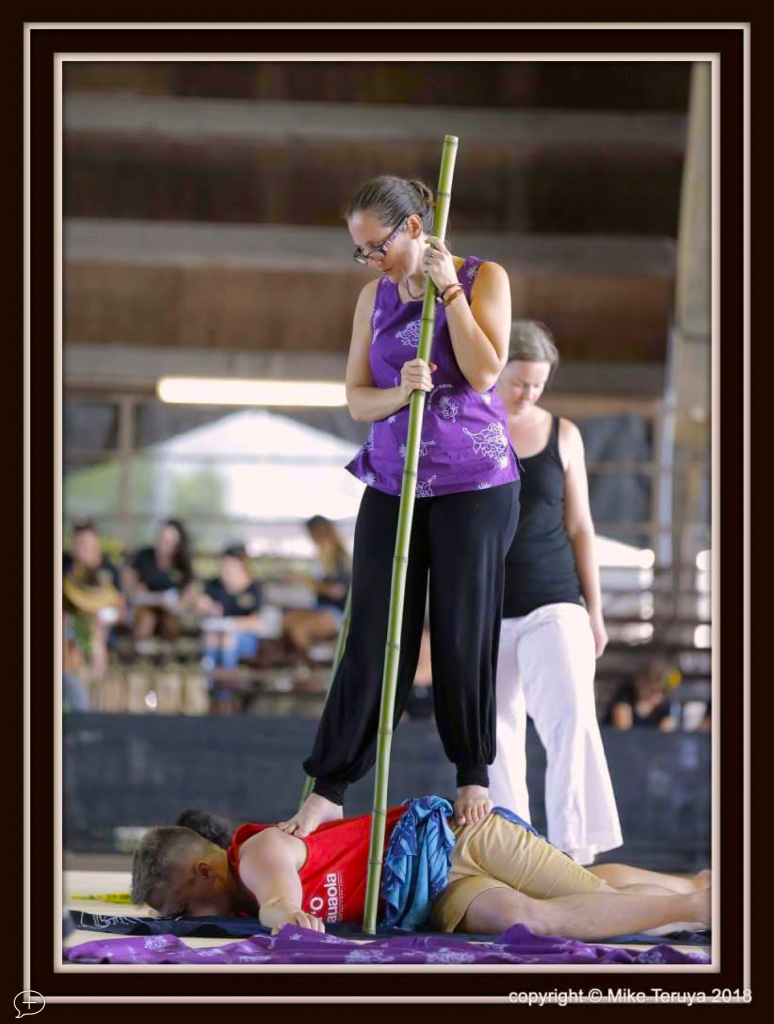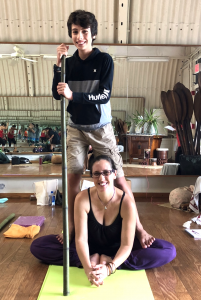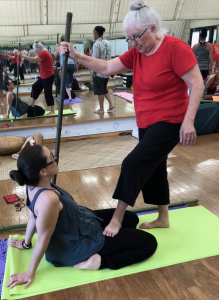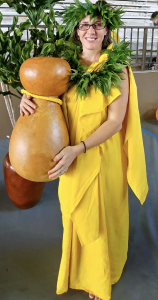



Our kumu hula Mālia Helelā made all of us proud at the close of the 5th World Hula conference when she took the stage at Edith Kanaka’ole Stadium on June 23rd. There she described and demonstrated, along with other students, what their class had learned in their 3-day workshop on the art of hakikino, taught by lomi teacher Keola Chan. Mālia was also joined on stage by her son Kaiehu, with whom she demonstrated the art of walking on each other!For Mālia, lomi and hula are two sides of one life practice.Used exclusively by hula schools to limber up the students for dancing, hakikino, also known as hakihaki, is a specific form of Hawaiian lomilomi massage that Keola Chan is helping to revive. Hakikino is so connected to hula, practitioners even use certain limbering movements in time with the ipu drum beats. For Mālia, assisting her lomi teacher at the Hula Conference in Hilo was a perfect blending of bodywork and dance.
July 2018 marks Mālia’s 20 year anniversary as a Licensed Massage Therapist (LMT). She has gone from humble beginnings as a child doing massage at home, to becoming a sought-after trainer of those wanting to learn the Hawaiian art of lomilomi.When I met Mālia in 2011, she had been doing massage at the Outrigger Hotel spa for a decade and was ready for a change. Fortunately for us, that change was moving to Still & Moving Center to teach hula, head up our massage program and help me manage the center.
Since that time she has given lomi to hundreds of clients and further developed her own techniques through advanced training. She is currently in her final year of a 4 year lomilomi program with Keola Chan. As part of this year’s work in the community, Mālia has created and is leading a 13 month program teaching lomilomi to residents and their children in Women’s Way Drug Recovery Program by the Salvation Army.
At Still & Moving Center, Mālia now provides 16 hour lomi massage training courses to local and international students who wish to learn this ancient Hawaiian technique for restoring the body. Her entire lomi program lasts 64 hours, and presents lomi in the context of the Hawaiian language, landscape, hula, chants, lei-making and knotting practices – the full cultural setting of its origin.



Get the Still & Moving App
This post is also available in: 日本語 (Japanese)

